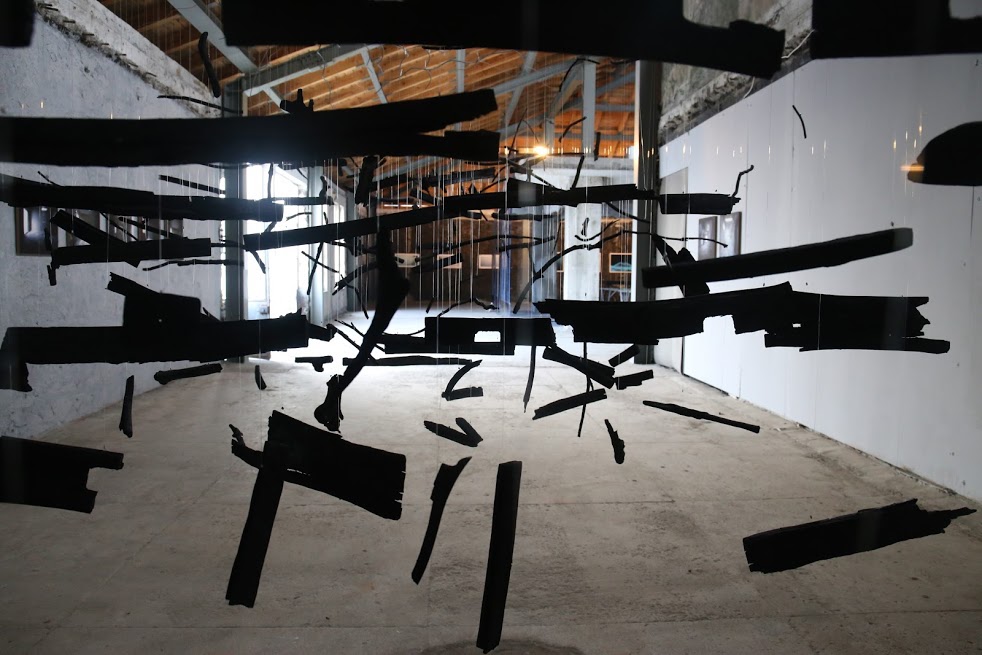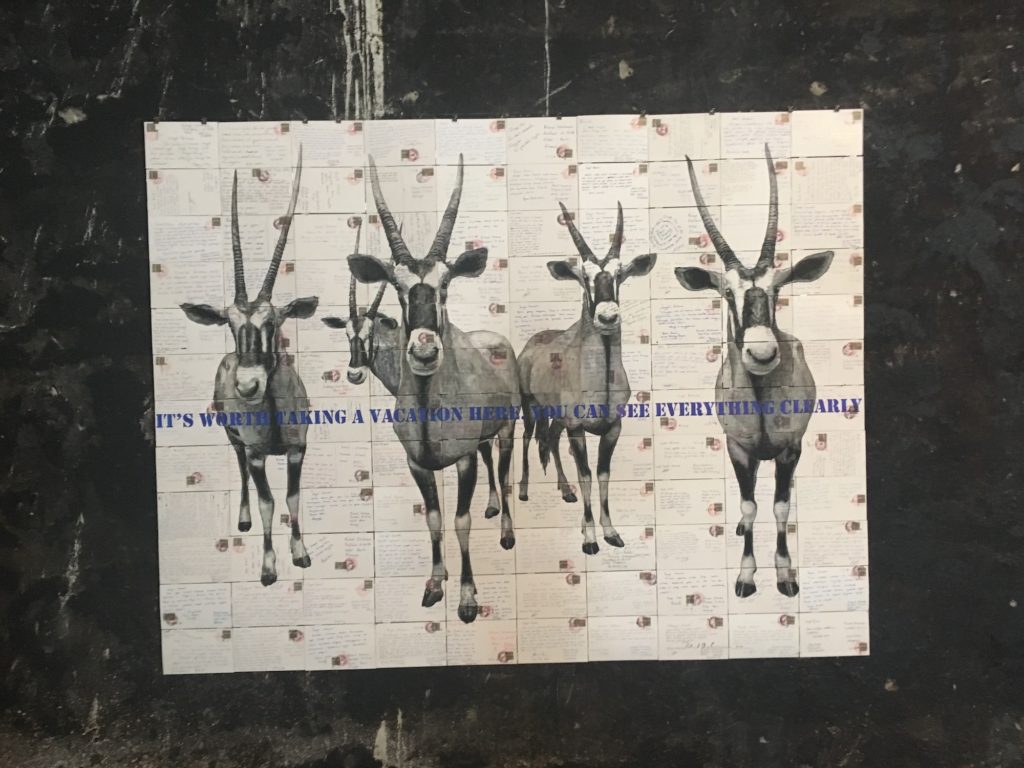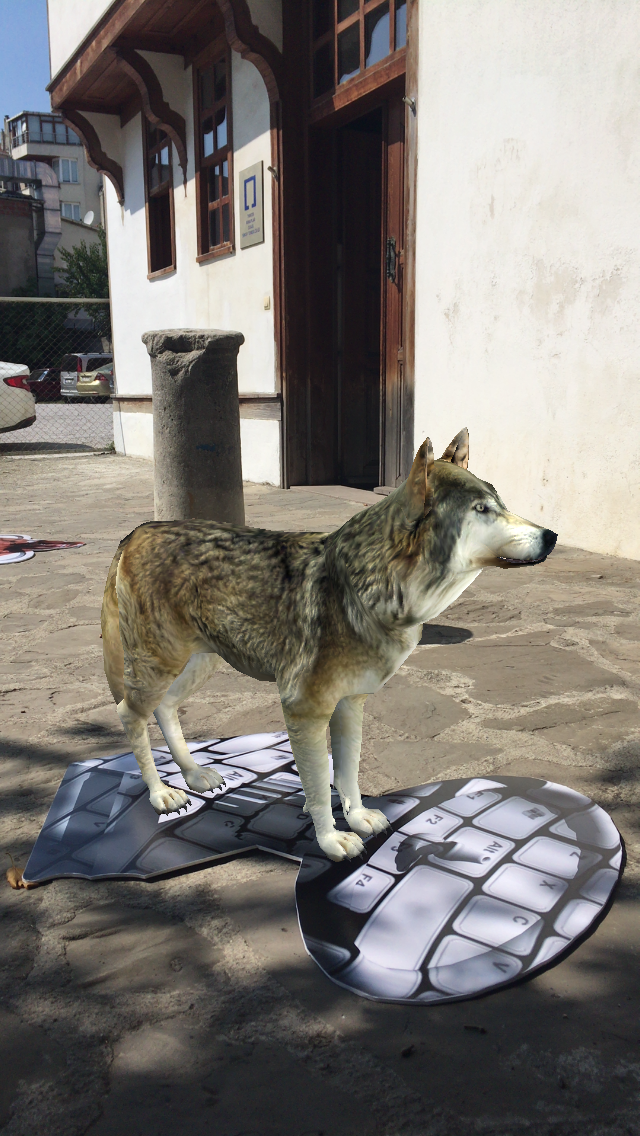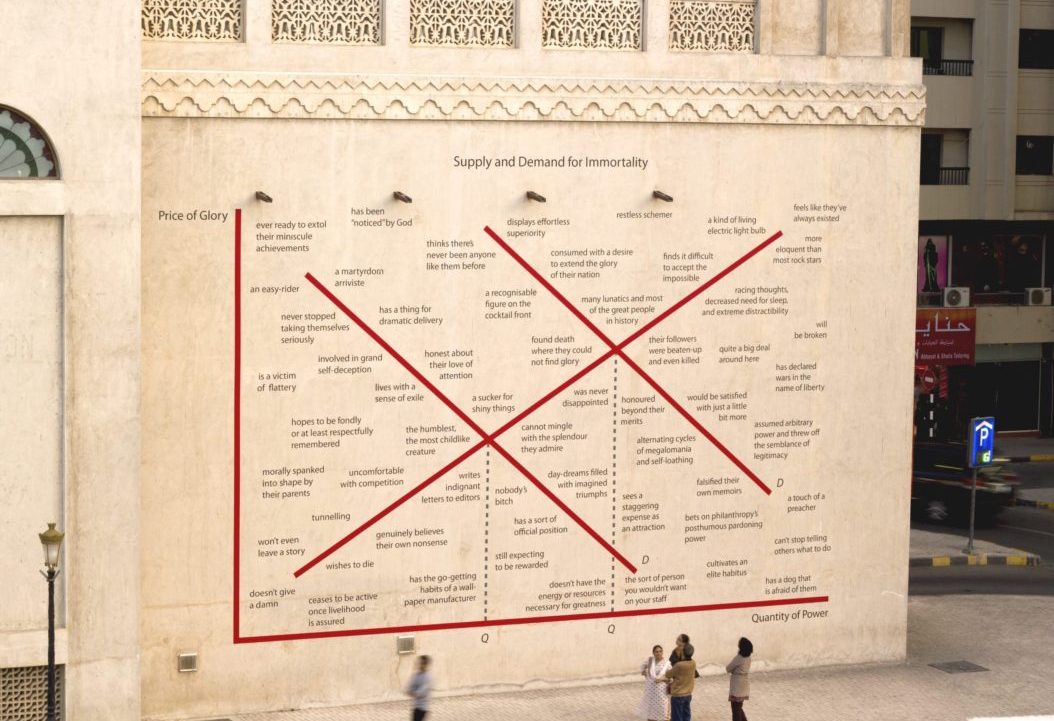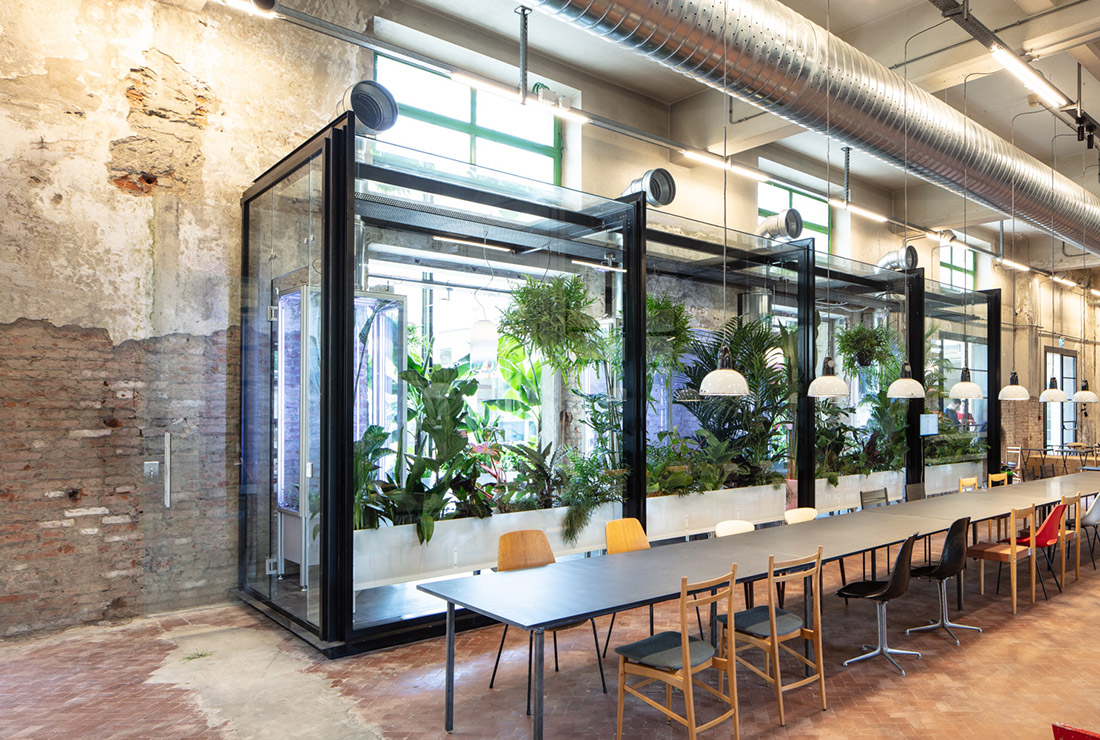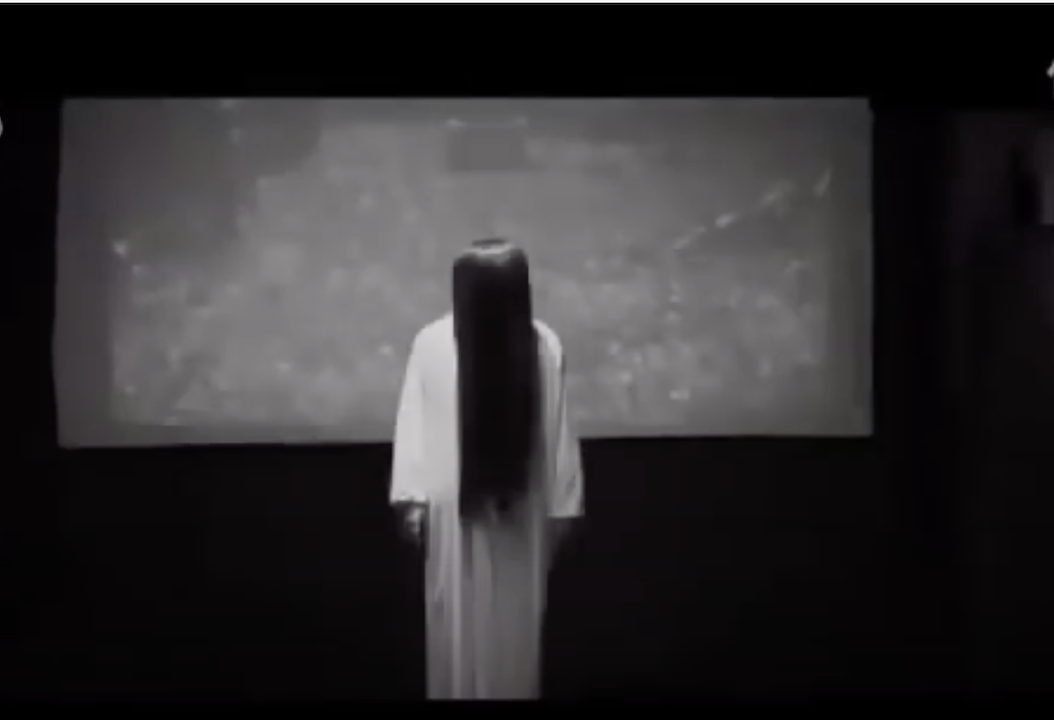JONATAN HABIB ENGQVIST
Why We Do It
- 17.12.2018
Ugo Rondinone, Where Do We Go From Here?, 1999/2017. Neon, perspex, translucent film and aluminium. 625 x 1150 x 10 cm. Produced and presented with the support of Koç Holding. Installation view at the Mustafa Kemal Cultural Center, Beşiktaş; 15th Istanbul Biennial, a good neighbor. Photo: Onur Doğman. Courtesy of the Istanbul Biennial.
Why make biennials? Vanity, recognition and curiosity naturally play their parts – but I suspect that there is another level of desire or motivation involved. Let’s call it the utopia of art on centre stage. And perhaps we should talk about commitment rather than ‘agency.’ The biennial is first and foremost a space for art. In art biennial discourse, we tend to speak a lot about how we do it, which is fine, as long as the space for art does not get lost along the way. Hopefully, most biennial makers do it because they believe that art creates meaning, and that the biennial format is conducive to many expressions of contemporary art.1 Occasionally biennials might even allow us to stretch the definition of what contemporary art can be. My position may be that of a romantic artophiliac, but considering how easy it is to be a cynic in the art world, it is a position that I am prepared to defend. Even if we speak of politics in relation to biennials, we should be wary of losing track of the role of biennials as defenders of the politics inherent to artworks (rather than reducing the works to vehicles or illustrations of a particular political agenda).2
Ugo Rondinone, Where Do We Go From Here?, 1999/2017. Neon, perspex, translucent film and aluminium. 625 x 1150 x 10 cm. Produced and presented with the support of Koç Holding. Installation view at the Mustafa Kemal Cultural Center, Beşiktaş; 15th Istanbul Biennial, a good neighbor. Photo: Onur Doğman. Courtesy of the Istanbul Biennial.
Andrea Phillips has rightly pointed out that the paradox of the biennial is that it commonly suggests an alternative to global capital while being executed, financed and produced through its means.3 Nevertheless, I would concur with Anne Szefer Karlsen that a biennial – no matter if it is the first, second or eighth edition – comes across as an institution, and like any other art institution it has owners (be they public or private), expectations, ambitions, problems and potentials. The biennial field is traversed by many interests: those of business and urban development, politicians, gallerists, curators, artists and audiences.4
I would choose the biennial as my workplace any day! Working as a curator in a place where the entire team is heading towards more or less the same goal should never be underestimated. Indeed the biennial has become a unique institution that authorises the use of most artistic formats (residencies, talks, performances, installations, interventions, social engagement, publications, etc.) and can provide engagement with existing initiatives (institutional, artist-run, academic, non-art-world actors, etc.) while also allowing for artistic experimentation.
In August 2016, my co-curators Nike Bätzner and Melih Görgün and I had to make a tough collective decision about the sixth edition of Sinopale. Following the coup in Turkey, we decided to postpone the show, which was to open just a couple of weeks later. Needless to say, the thematic focus Transposition/Aktarim took an unexpected turn. Ironically, this peripheric biennial on the Black Sea coast in northern Anatolia had never received as much international attention as when we sent out the press release announcing its postponement.
It was a painful but necessary action. After considering a number of options and strategies, we chose to postpone the event by one year. Some of our initial ideas were quite innovative – from an entirely instruction-based biennial to simply narrating unrealised projects – and could have made for an interesting biennial in another context. However, Sinopale is a process-based biennial for which the artists create works on site with local carpenters, associations, bakeries and so on. For the 2016/2017 edition, we intended to have the artists on site, creating as many works as possible in situ – including complex installations, an augmented reality app and swimming lessons.
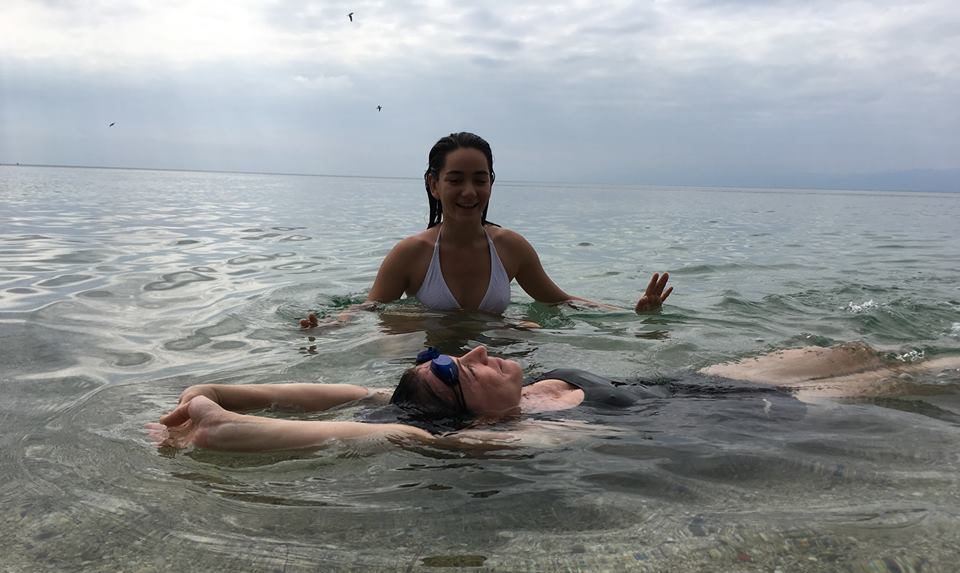
Raluca Popa, Sinopia rhymes with Diplopia rhymes with Myopia (detail), 2017. Swimming lessons, eye test, prescription glasses, drawing and clay. Black Sea and former Ice Factory Buzhane, Sinop. Photo: Jonatan Habib Engqvist
Raluca Popa, Sinopia rhymes with Diplopia rhymes with Myopia (detail), 2017. Swimming lessons, eye test, prescription glasses, drawing and clay. Black Sea and former Ice Factory Buzhane, Sinop. Photo: Jonatan Habib Engqvist
The situation also encouraged us to work with our good neighbours in Istanbul.5 This experience revealed that behind their own devastating jargon (new models for artistic production, sites of knowledge production, platforms of exchange and so on), most biennials actually have significance for the place where they exist.6 For lack of better terminology, one could say that every biennial is part of a larger ecosystem. This is acutely clear for events taking place in the so-called periphery or in a region with strained infrastructure and few opportunities for artists. It is not that curators who come from elsewhere have some kind of moral obligation in this situation, but that, for a biennial to ‘work,’ we have to be aware of the local artists’ needs and prepared to meet these conditions.7
In a recent seminar on biennials, Maria Lind asked how one could find a political position closer to the processes and conditions of art making. How can we work so that the biennial itself is an art production? How can we exist on a smaller scale while also sustaining long-term relationships within the logic of the biennial as a site for artistic experimentation? Following Deleuze and Guattari’s idea of becoming minor, she meant that the question of scale is key.8
Lind argued that larger biennials would do well to support the local infrastructure artistically and economically. She upheld two recent initiatives: Christine Tohmé’s sharing of a significant percentage of the Sharjah Biennial’s exhibition budget with regional actors and her own attempts to incorporate local initiatives from Gwangju into her edition.
The term ‘minor,’ and perhaps more clearly the French mineur, also carry a refreshing air of immaturity and a rarely discerned dimension that could further inform this discussion: it introduces something that feels less obligatory, contrived, formalising and infrastructural while it also avoids becoming a gesture of symbolic representation. In short: more playful.
The import of Deleuze and Guattari’s remarks might be something that, in our age of bureaucracy and accountability, cannot be measured and evaluated, or even justified. Perhaps this is where we can find a good reason to make biennials. Even if biennials are “widely used for urban marketing ploys, activist platforms, postcolonial statements and more, when they’re not particularly good at any of these things,”9 targeting by various political interests can be interpreted as an indicator. These institutions give artists a voice and generate meaning of some relevance in a global political climate that paradoxically often casts internationalisation and artistic expression as threats. There might be few rational arguments for making art biennials today, but I wonder if their irrationality couldn’t provide a strong case for doing so.
“Expression must sweep up content; the same process must happen to form,” Deleuze and Guattari write. “It is not a politics of pessimism, nor a literary caricature or a form of science fiction.”10 The curator’s job might merely be to present something new. But this could well imply bringing in a new perspective. A perspective that acknowledges the position of the biennial in a local artistic environment, pays attention to local artists, is curious and endorses what already exists.
How is easy but it might take a Heideggerian hammer to figure out why.11

Charcoal production for Ulrike Mohr’s Black Sea Resonance in the countryside outside Sinop. Photo: Jonatan Habib Engqvist
Charcoal production for Ulrike Mohr’s Black Sea Resonance in the countryside outside Sinop. Photo: Jonatan Habib Engqvist
NOTES
1 As a curator I see very few arguments for making biennials beyond this curatorial pathos. The relationship between compensation and labour is utterly unequal. The financial rewards and the relative accrual of cultural capital don’t measure up to the emotional rollercoaster, email overload, bureaucratic curveballs and tightrope between artists’ desires and an organisation’s operations, not to mention the price paid by family and loved ones. Of course it is a privilege to travel, meet remarkable people and feel that you participate in a larger cosmopolitan, intellectually stimulating and creative community, but this alone could never motivate the making of large-scale exhibitions of this kind.
2 Having said this, I would agree with Tirdad Zolghadr when he writes that “[i]t is great for curators to take an exhibition more seriously as a political arena in its own right. But to ignore that arena’s effects on the global setting around it is to linger, rather primly, within the orthodoxies of contemporary art as we know it.” Tirdad Zolghadr, “Chapter 5, Working Examples: Three Biennials,” in Traction, Berlin: Sternberg Press, 2016, p. 129.
3 Nordic Biennial Symposium organised by GIBCA and Valand Academy, March 29, 2017. A similar argument was put forward by Charlotte Bydler in her dissertation “The Global ArtWorld Inc.: On the Globalization of Contemporary Art,” Uppsala University, 2004.
4 Anne Szefer Karlsen, “An Institution Already First Time Around,” in Making Biennials in Contemporary Times: Essays from the World Biennial Forum no2, Galit Eilat, Nuria Enguita Mayo, Charles Esche, Pablo Lafuente, Luiza Proença, Oren Sagiv, and Benjamin Seroussi, Amsterdam: Biennial Foundation; São Paulo: Fundação Bienal de São Paulo and ICCO – Instituto de Cultura Contemporânea, 2015, p. 75.
5 The 15th Istanbul Biennial was entitled A Good Neighbour. It was conceived as an invitation to collaborate on many levels as a reaction to the situation in the country, where the curating duo Elmgreen & Dragset reached out to the Turkish and international art communities throughout the curatorial process.
6 In recent years, there has been much talk about the ‘biennalisation’ of the art world, referring to the proliferation of art biennials around the globe. There may, in fact, be too many biennials. But this also depends on who we think they are for. An institution such as the Ural Industrial Biennial in Ekaterinaburg, Russia, which is the main – if not the only – platform for contemporary art in its region, plays a very different role from that of the Moscow Biennale or the Whitney Biennial, both of which are basically large museum group exhibitions (replicating the museum model of organisation, production, presentation and education, with slight deviations and periodic amplification) while activating the term ‘biennial’ for its branding and public relations potential. Meanwhile, the Venice and Kassel ‘motherships’ are becoming increasingly spectacular in a manner that might even undermine their own relevance as sites for artistic experimentation.
7 Even if attendance is not a fundamental measure of success, most biennials are already working to develop and strengthen relationships in order to attract a more diverse group of visitors to their exhibitions. However, I don’t believe in organising (and investing in) outreach efforts based on the distinction between professional and non- professional audiences. Of course, people might need different tools depending on context, which is why we, as curators, need to refine our understanding of education to avoid replicating the methodologies of museum pedagogy or of museum communications, which often results in ‘dumbing down’ the show.
8 Nordic Biennial Symposium organised by GIBCA and Valand Academy, March 29, 2017. The connection between biennials, centre, and periphery, and Deleuze and Guattari’s idea of ‘minor literature’ was also brought up by Moacir dos Anjos “Between Local and Global, Minor as Possible Resistance,” in Making Biennials in Contemporary Times: Essays from the World Biennial Forum no2, pp. 80–89.
9 Tirdad Zolghadr, op. cit., p. 128.
10 Gilles Deleuze and Felix Guattari, Kafka: Toward a Minor Literature, Minneapolis: University of Minnesota Press, 1986, p. 58.
11 I’m riffing on Martin Heidegger to remind us that there are different ways of existing in the world. It is not until one understands the reason why one needs a biennial (or what, in the present form of the biennial, is ‘broken’ or does not work) that one might know what one needs it to be. See Being and Time, Part 1, division 3, section 18.
ABOUT THE AUTHOR
Jonatan Habib Enqvist is an independent curator and writer based in Stockholm. Most recenty, he was co-curator of the process- based biennial Sinopale 6 in Sinop, Turkey, and of SURVIVAL KIT 9 in Riga, Latvia, in 2017. He is currently organising New Småland – a series of events produced in collaboration by four art institutions in southern Sweden –and running the small-scale curatorial residency CRIS in Stockholm.



